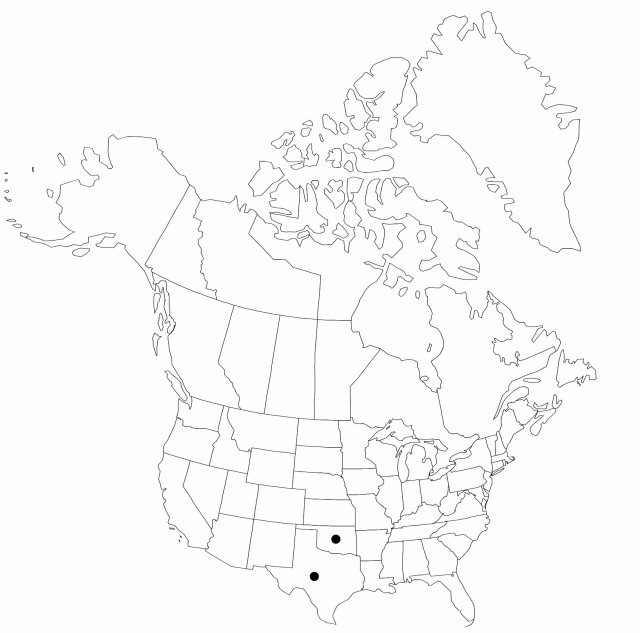Eleocharis occulta
Novon 11: 247, figs. 2, 3E–K. 2001.
Plants perennial, densely cespitose; rhizomes concealed by persistent dead culm bases, often ascending, short, 3–5 mm thick, hard, cortex persistent, internodes very short, scales decaying to coarse fibers, 5–12 mm, papery. Culms subterete to slightly compressed, less than 2 times wider than thick, with 4–7 blunt ridges when dry, 27–56 cm × 0.2–0.5 (–0.7) mm, firm to hard, spongy. Leaves: distal leaf-sheaths persistent, not splitting, proximally red, distally green to stramineous, often inflated, thinly papery to membranous, sometimes translucent, apex broadly obtuse to subtruncate, often callose, tooth absent. Spikelets ovoid, 3–10 × 2–3 mm, apex acute; proximal scale amplexicaulous, apex 2-fid; subproximal scale with a flower; floral scales spreading in fruit, 20–50, 7 per mm of rachilla, medium brown, midrib region often narrowly stramineous, carinate, lanceolate-attenuate, 2–2.8 × 1 mm, apex 2-fid. Flowers: perianth bristles 3 or absent, stramineous to pale-brown, rudimentary to 1/2 achene length, obscurely retrorsely spinulose; stamens 3; anthers orangebrown, 0.7–1.3 mm; styles 3-fid. Achenes falling with scales, medium or dark-brown, obpyriform, nearly equilaterally obscurely trigonous or cross-section nearly circular, 0.7–1 × 0.5–0.65 mm, neck distinct or rarely absent, obscurely rugulose at 10–30X, 30 or more low, blunt horizontal ridges in vertical series. Tubercles brown, depressed-pyramidal, often rudimentary, 0.1–0.15 × 0.2 mm.
Phenology: Fruiting spring (Mar–May), sometimes summer (Jul).
Habitat: Seasonally wet, calcareous seeps, depressions, swales, rock crevises, rocky stream beds, stream banks, wet meadows, pond margins, often on limestone
Elevation: 80–300 m
Discussion
Eleocharis occulta is very invariable in contrast to the extreme variability of E. compressa.
Selected References
None.
Lower Taxa
"spinulose" is not a number."shortened" is not a number.

